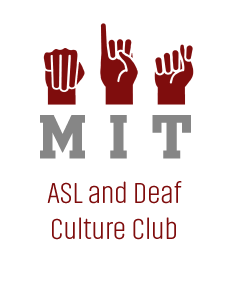There are many resources for learning ASL online. As a beginning ASL student, it's not obvious which resources are reliable or not. In particular, there are many videos made by beginning signers (typically hearing ASL students) that in many cases do not model ASL as it is used by most Deaf people. Furthermore, many examples of "ASL" are heavily influenced by English and related sign systems / languages such as Signed Exact English and Pidgin Signed English.
Below are a few resources online that we have found very useful.
- ASL University (Lifeprint)
This website contains many vocabulary words, organized in lessons, with written explanations of the meanings of signs, related signs, and variations. Most signs found in the Humphries and Padden "Learning ASL" book are also on this site. Here's a list of the linked vocabulary for Units 1-8.
This site can contain very rich discussion about specific signs. For example here and here are discussions on the sign "STUDENT", and how it can be signed different ways. This is an amazing way to quickly learn the kinds of variation that can exist within ASL. The author of this website also has some videos on youtube.
- ASL Storytelling by Educational Resource Center on Deafness at Texas School for the Deaf
Many of the stories contain text, voice-over, and/or illustrations. It is fun to see how intonation and illustrations can be depicted within ASL! For example, look how the storyteller depicts the narrator and character quotes, lazy and eager characters, big and small characters, different chores, and different objects in "The Little Red Hen". Storytelling shows how different the visual modality for language can be. Note that even when not telling a children's story, ASL signers typically will manually illustrate scenes, roleshift (take on the roles of different people in a situation, indicated by body shifting, gaze shifting, and so on.) and make heavy use of classifiers.
- ASLized!
This channel contains several children's stories too, without voiceovers and without as much text support. This resource is still accessible to beginners. For example, can you tell when the storyteller is taking on the character role of one of the Pigs vs the Wolf in this familiar story?
This channel also contains many other interesting videos on ASL linguistics, such as this video about ASL aquisition in children. This video, and many others, contains English closed captions that can be enabled in the video player.
If you love watching kids sign, there are many cute videos.
- ASL THAT! Youtube Channel
Great videos for learning about specific ASL vocabulary and grammar topics, as well as comparing ASL with more English-y signing styles.
Here is a lesson on basic vocabulary.
- ASL THAT! Facebook Page
Many Deaf signers discuss ASL on this facebook page. ASL is a living, evolving language!
Here's a video discussing a pattern in related nouns and verbs in ASL (such as "chair" and "sit", or. "scissors" and "cut").
Here's another video (a comment made on this thread) that discusses many possible signs and meanings for the English "lose". A non-expert signer might have difficulty understanding all the signing of this video, however there is a lot of text support in this video.
There are often discussions about vocabulary related to a popular topic. Here's a thread discussing possible signs for "Eclipse".
- Rob Nielson's Youtube Channel
Many good lessons and stories focused on teaching ASL to students. Videos may contain closed captions. Here's a lesson. Here's a classic ASL joke that explains some signs as it goes along.
- CODA Brothers Youtube Channel
These videos are produced by two brothers who are Children of Deaf Adults. Their videos contain sign and speech (both produced by them, not interpreted), but often no text or captions. They give a glimpse into stradling the hearing and Deaf world. Most videos are hilarious. Here's a satire about different deaf education philosopies. Here's a video showing some "deaf views on hearing culture". Here's another video that beginning students might find funny.
- ASL Music Interpretations
Lots of ASL music interpretation videos are made by non-expert signers and are awful. If you enjoy music, ASL music videos can be a fun way to learn some ASL, however. Here are some more artistic ones, made by Deaf people.
We are going to be friends
Call me maybe
Call me maybe (again)
Somebody I used to know
Happy
Ironic
Here are some made by hearing people:
Stutter
Less than perfect
As your ASL improves, you will find that more and more of these resources become accessible. For example, there are many video blogs (vlogs) by Deaf people and/or fluent signers, and sometimes these include captions. Beginning students will likely not understand most of the content in these videos, but they might still pick up a few new signs.
